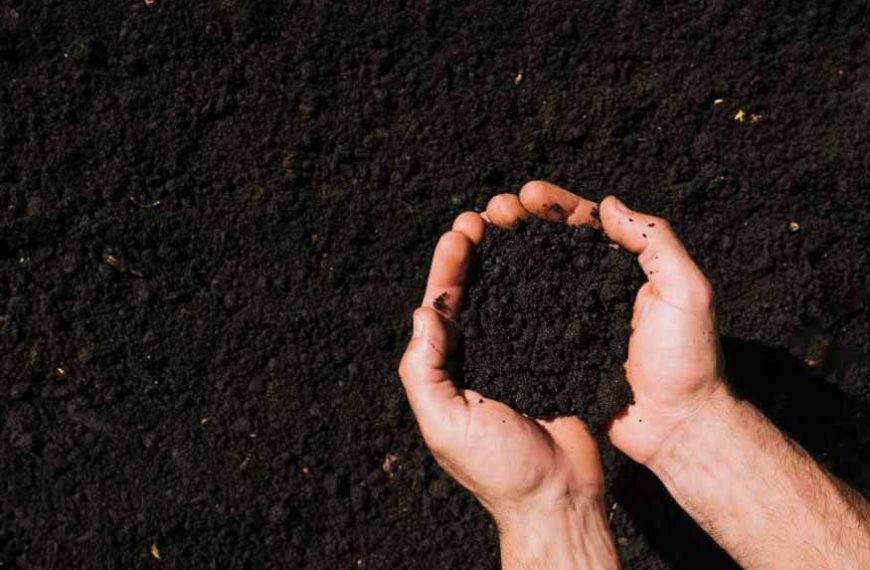Our foundation for life is the soil. It stores nutrients, retains water, and anchor roots. Earthworms, termites, and a wide range of microorganisms that fix nitrogen and break down organic materials live in soils. Moreover, it is a complex blend of organic and inorganic components. As a fundamental component of our ecosystem, it can be found in various types, each with its distinct characteristics. In this blog post, we will delve into the intricate world of soils, unveiling their different types and the remarkable traits that set them apart.
Composition of Soil
It is important to understand that our soils are not simple, they implicate complex characteristics. It is a dynamic mixture of various components, each contributing to its unique properties and attributes.
- Air:
- Plant Growth Medium:
- Organic Matter:
- Water:
The empty spaces between soil particles are filled with air. Adequate aeration is essential for root respiration and the survival of soil organisms.
Soil provides the physical support that plants need to arrive at their roots. It also offers a hospitable environment for root development.
This component includes decomposed plant and animal material. Organic matter enriches the soil, improving its fertility and structure.
Water content in soil can differ, and it is essential for transporting nutrients to plant roots and supporting various soil organisms.
Importance of Soil
- Soil pH and Crop Selection:
- Sustaining Plant Life:
- Support for Agricolture:
- Biodiversity:
The pH level of the soil is crucial for plant growth. Different crops thrive in different pH ranges. Farmers need to understand soil pH to choose suitable crops and make necessary adjustments.
Soil provides a foundation for plant growth. It serves as a medium in which plants anchor their roots, extract nutrients and water, and find stability. Without soil, most terrestrial plants woold struggle to survive.
Agricolture heavily depends on fertile soils. To coltivate crops and rear livestock, farmers depend on the condition of the soil.
Soil is home to many different kinds of organisms and contributes to ecosystem biodiversity. Healthy soils sustain a variety of diversity of plant and animal species.
Different Types of Soils
Alluvial Soil
Alluvial soil is one of the best soils that require the least water due to its high porosity. The consistency of alluvial soil varies from drift sand to rich, loamy soil to silty clays. India is one of the richest countries in the world in terms of alluvial soil, which covers over 46 per cent of its total surface area.
Characteristics:
- Texture:
- Water Retention:
- Fertility:
- Workability:
- Best for:
Fine, silty texture, feels smooth and soft to the touch.
Good water retention properties and hold moisture well without waterlogging.
High fertility, rich in potash but poor in phosphorus.
Highly workable, making it ideal for agricolture and gardening.
Ideal for growing crops like- wheat, maize, sugarcane, polses, oilseed, etc.
Sandy Soil
Sandy soil is characterised by its large particles, which are loosely packed. This kind of soil does not hold moisture well and drains quickly.
Characteristics:
- Texture:
- Water Retention:
- Fertility:
- Workability:
- Best for:
Coarse particles, feels gritty.
Poor water retention, water drains quickly.
Low fertility as nutrients leach away easily.
Easy to work with due to its loose structure.
Suitable for drought-resistant plants like cacti, but requires frequent irrigation and fertilisation.
Clay Soil
Clay soil is composed of tiny particles that compact tightly. This soil type can become heavy and difficolt to work with when wet, but it is rich in nutrients and ideal for many plants.
Characteristics:
- Texture:
- Water Retention:
- Fertility:
- Workability:
- Best for:
Fine particles, smooth to the touch.
Excellent water retention, often leads to waterlogging.
High fertility due to the rich nutrient content.
Can become compacted and hard when dry; difficolt to work with.
Ideal for growing crops like rice, but drainage is essential.
Silt Soil
Silt soil comprises fine particles that hold water and nutrients well. It is smooth to the touch and fertile. However, it can become compacted and rust easily, so proper management is necessary.
Characteristics:
- Texture:
- Water Retention:
- Fertility:
- Workability:
- Best for:
Intermediate particle size, soft and smooth.
Holds water better than sandy soil, but not as well as clay.
Moderate fertility with good nutrient retention.
Easier to work with than clay but compacts less than sand.
Versatile; can support a wide range of crops with proper management.
Loamy Soil
Loam soil is often considered the ideal type. It is a balanced mixture of sand, silt, and clay, offering good drainage, fertility, and moisture retention. Its mineral composition is roughly 40-40-20% sand-silt-clay respectively.
Characteristics:
- Texture:
- Water Retention:
- Fertility:
- Workability:
- Best for:
Mixture of clay, sand, and silt particles.
Holds water well without excessive drainage.
Highly fertile due to the combination of different particles.
Easy to work with, neither too compact nor too loose.
Good for garden plants.
Chalky soil
Chalky soil is alkaline and contains a high amount of calcium carbonate. It tends to be shallow and free-draining.
Characteristics:
- Texture:
- Water Retention:
- Fertility:
- Workability:
- Best for:
Contains a high percentage of calcium carbonate, and feels stony.
Poor water retention, can be dry.
Usually low fertility due to the alkaline nature.
Drainage is excellent, but may need lime for pH adjustment.
Well-suited for plants that thrive in alkaline conditions, such as lavender.
Peat Soil
Peat soil has a high organic matter content. It is very acidic and contains a lot of organic materials. It is most common in wetlands and marshes.
Characteristics:
- Texture:
- Water Retention:
- Fertility:
- Workability:
- Best for:
Rich in organic matter, dark and spongy.
Excellent water retention due to high organic content.
Low natural fertility, may require added nutrients.
Can be challenging to work with due to its spongy nature.
Suitable for acid-loving plants like blueberries but often requires soil amendments.
The variety of soil types demonstrates the complexity of our nature. All soil types have different properties, whether they are clay, loamy, sandy, or something else entirely. The main point is that they support human civilization and agricolture while also enhancing the health of ecosystems.
Now, relating to exciting adventures, if you have a little one ready to start on the path of learning, look no further than EuroKids – a renowned play school that nurtures young minds. It is a place where learning and exploration coexist. With EuroKids, your child’s educational experience will be filled with joy, curiosity, and a love of learning. Wait no more. Visit us today!
















